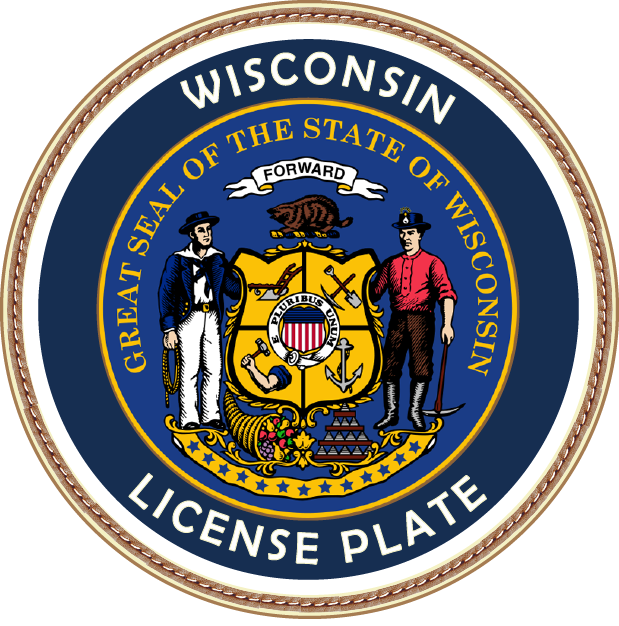License Plate Laws and Regulations in Wisconsin
Every registered vehicle on Wisconsin roads must meet specific license plate requirements. These laws ensure proper vehicle identification, support law enforcement, and maintain public safety. Whether you drive a personal car, commercial truck, trailer, or motorcycle, it’s essential to follow these rules to avoid penalties or delays.
This guide explains display rules, sticker placement, temporary permits, and what happens if you fail to comply.
Dual Plate vs. Single Plate Requirements
In Wisconsin, most vehicles must display both front and rear plates, including:
- Passenger cars
- Pickup trucks
- SUVs and vans
- Commercial vehicles under certain weight thresholds
The rear plate must always be present and legible; the front plate must be mounted on the bumper or grille in a clearly visible position.
The following vehicle types typically require only a single rear plate:
- Motorcycles and mopeds
- Trailers (including boat and utility trailers)
- Antique vehicles (with special registration)
If your vehicle qualifies for rear-plate-only status, don’t add a second/front plate or reuse an old one—this can cause issues during enforcement or automated plate reads.
Proper Display and Mounting
Plates must be:
- Securely fastened to prevent swinging or detachment
- Mounted horizontally with characters facing outward
- Visible and unobstructed (not inside the vehicle, except valid temporary permits)
- Kept free of dirt, debris, snow, or anything that obscures numbers or stickers
- Not covered by tinted/mirrored covers or frames that conceal information
Plates must be legible from a reasonable distance. If yours is scratched, faded, bent, or unreadable, replace it promptly.
Registration Stickers and Renewal Decals
- Issued with annual or biennial registration
- Placed on the rear plate only, lower-right corner
- Show the month and year of expiration
Using a sticker from another vehicle or misplacing it is a violation. Keep your renewal receipt handy or in your DMV online account.
Temporary Plates and Permits
After purchasing a vehicle, you may receive a temporary plate/paper permit (typically valid up to 90 days). It must be:
- Displayed in the lower-left corner of the rear window (or securely inside if no rear window)
- Clearly visible from outside
- Protected from folds, tears, and moisture
Improper display can result in fines or, in extreme cases, impoundment if the vehicle appears unregistered.
Legal Penalties for Non-Compliance
Consequences vary by violation and can include citations, fines, and points on your driving record (which may affect insurance or licensing). Serious offenses may lead to registration suspension or denial of renewal.
Common Violations
- Expired registration
- Missing required front plate
- Damaged, unreadable, or obscured plates
- Unauthorized/altered plates or stickers
- Plate number not matching DMV records
Forging or altering plates/stickers is a criminal offense and can lead to arrest and prosecution.
Stay Compliant and Drive with Confidence
Mount plates correctly, keep decals current and visible, and display temporary permits as required. To check your plate’s registration status—or to verify a plate before buying a vehicle—use our Wisconsin license plate lookup tool. Stay safe, informed, and compliant on Wisconsin roads.
